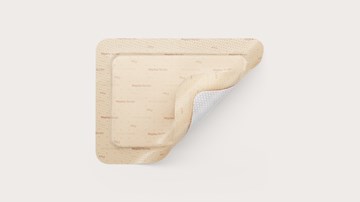Five ways we're working to reduce our impact
For decades, we’ve been working to increase the sustainability of our solutions. This is both because it’s the right thing to do and to support our customers – many of whom, such as the Southern District Health Board in New Zealand, now calculate their carbon footprint. As their partners, we contribute to that. We are as transparent as we can be; sharing our sustainability approach and targets and being open about where we still need to make progress.
Across the business, there are numerous projects to minimise our impact on the environment. We put the spotlight on five things we’ve been doing to help make our solutions more sustainable in 2019.
Clean energy in manufacturing
We installed 2,600 photovoltaic panels on the roof of our manufacturing facility in Kuala Ketil, Malaysia, which manufactures Biogel® gloves. The installation of the 914 kWp photovoltaic system is expected to generate approximately 23,400 MWh of clean energy over the long term – preventing the release of 16,200 tonnes of carbon dioxide into the atmosphere.
Recycled raw materials
Key functionality in the Mölnlycke® Z-FlexTM Fluidized Heel Boot will be made of recycled polyurethane from Q1 2020. The air chamber in Heel Boot helps to prevent pressure ulcers by redistributing pressure from the heel and Achilles tendon to the whole lower leg.
To help reduce our environmental impact, our product development teams worked with our polyurethane suppliers to test recycled alternatives. In user tests, the air chamber made of recycled polyurethane performs exactly as the air chamber made of non-recycled materials.
Smaller packing boxes
In 2019, we introduced a new, smaller packing box for our procedure trays – bringing a number of environmental benefits. The new boxes, which are 80 mm lower than the old ones, take up less space, meaning each truck can carry on average 200 more trays than before, reducing our use of road transport.
We’re also able to reduce our use of the chemical EtO during sterilisation – as 5% more boxes can be sterilised at one time. The new smaller boxes require less material to produce and mean less packaging waste for healthcare facilities. By the end of the year, around 30% of our trays were being packed in smaller boxes.
Recycling waste materials from manufacturing
Small amounts of silver are used in the foam layer of our Ag dressings as a fast-acting anti-bacterial for acute burns and highly infected wounds. Since 2009, our factory in Wiscasset, Maine, has been reclaiming the silver waste from foam scrap. We recently identified how to capture the microscopic amounts of silver left in wastewater, preventing it from entering the sewage system and causing a hazard.
Thanks to the project – a collaboration between Mölnlycke, the Wiscasset sewage department and the Maine Department of Environmental Protection – 100% of silver waste is now recycled. We were proud to receive the Governor’s Award for Environmental Excellence for Sustainability as a result.
Reducing freight volume through efficient logistics
Every year, we ship 15,000 boxes of drapes and gowns from our manufacturing facility in Thailand to our factories in the Czech Republic by sea freight. Until this year, each 40-foot container carried 72 boxes.
Our logistics teams knew there was wasted space in the containers – and identified a novel solution: using slip sheet technology to change the way boxes were loaded into the container. Each container can now transport a total of 120 boxes of drapes and gowns, reducing the number of containers we require.
This story was first published in the Sustainability report 2019. Read the full report here.






